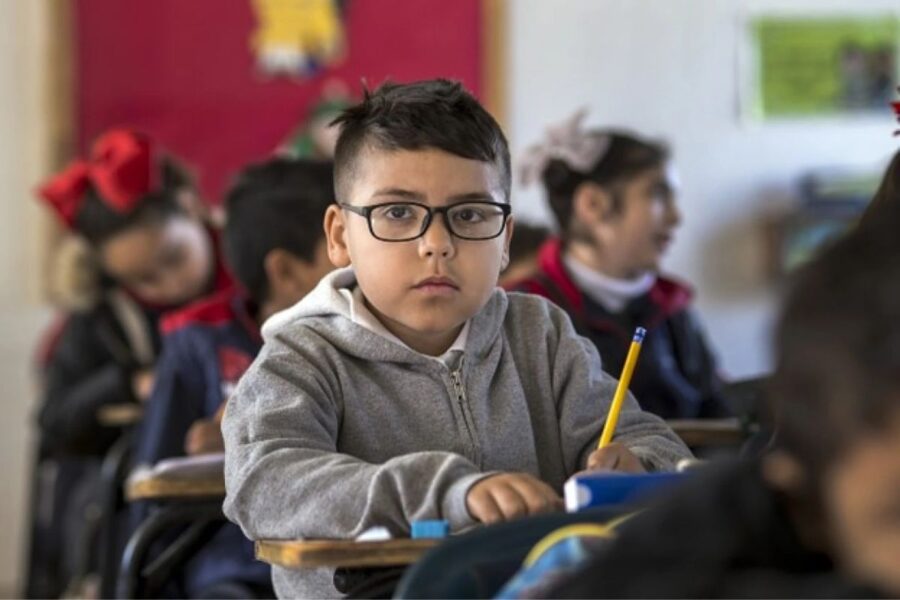New Report Reveals Educational Disparities: A recent report published by the Annie E. Casey Foundation has shed light on the educational disparities faced by children of color in Alabama.
The findings of this report are both concerning and thought-provoking, as they reveal significant gaps in educational outcomes, opportunities, and resources for these children.
While the report highlights the challenges faced by the state, it also offers potential solutions and emphasizes the need for equitable investments in order to ensure a brighter future for all Alabama’s children.
This discussion the key findings of the report, explore the underlying factors contributing to these disparities, and examine potential strategies to address this pressing issue.
Key Takeaways
- Alabama ranks first for the well-being of Indian or Alaska Native children but last for Latino children, highlighting the stark disparities in educational outcomes among different racial and ethnic groups in the state.
- Alabama falls below the national average in fourth-grade reading and eighth-grade math, indicating the need for urgent improvement in educational performance across the board.
- Black and Latino children in Alabama face significant obstacles in educational outcomes, emphasizing the need for targeted interventions to address the specific challenges faced by marginalized communities.
- Comprehensive policies and equitable investments are necessary to uplift children across racial and ethnic backgrounds and ensure equal educational opportunities for all.
Annie E. Casey Foundation Report Reveals Ongoing Disparities in Children’s Well-being
The Annie E. Casey Foundation Report has provided a comprehensive analysis that uncovers ongoing disparities in the well-being of children, revealing significant challenges that need to be addressed in order to ensure equal opportunities for all.
The Race for Results report specifically focuses on the educational outcomes and well-being of children of color in Alabama. The report highlights concerning disparities in the state, with children of color facing significant obstacles compared to their white counterparts.
These disparities persist at both the state and national levels, indicating the need for targeted interventions to address the underlying factors contributing to these inequities.
Despite some improvements, the report emphasizes the urgent need for comprehensive strategies that promote the well-being and educational success of all children, regardless of their race or ethnicity.
Alabama’s Educational Landscape: Annie E. Casey Foundation Report Unveils Varied Well-being Rankings
Alabama’s educational landscape reveals significant disparities in well-being rankings, as unveiled by the Annie E. Casey Foundation Report. According to the report, Alabama ranks first for the well-being of Alaska Native children but last for Latino children.
This highlights the need for targeted interventions to address the disparities affecting Black, Latino, and Native children in the state. The report emphasizes the importance of providing equal educational opportunities and support for children of all races and ethnicities.

ALSO READ: Alabama Spending Less on Education From 2006 Levels
Educational Disparities in Alabama: Annie E. Casey Foundation Report Highlights State Challenges
Highlighting the disparities in Alabama’s educational landscape, the Annie E. Casey Foundation Report sheds light on the challenges the state faces in addressing educational disparities. Alabama falls below the national average in fourth-grade reading and eighth-grade math, particularly for Black and Latino children, according to the Race for Results report.
This highlights the urgent need for comprehensive policies to uplift children across racial and ethnic backgrounds. The report underscores the importance of targeted interventions to improve educational outcomes for marginalized communities. To better understand the educational disparities in Alabama, the following table provides a comparison of reading and math proficiency rates for fourth-grade and eighth-grade students in Alabama, the national average, and the average for Black and Latino children.
| Alabama | National Average | Black Children | Latino Children | |
|---|---|---|---|---|
| 4th Grade | Below | Below | Below | Below |
| Reading | Average | Average | Average | Average |
| Proficiency | ||||
| 8th Grade | Below | Below | Below | Below |
| Math | Average | Average | Average | Average |
| Proficiency |
These statistics demonstrate the significant educational disparities faced by children of color in Alabama and the need for targeted efforts to address these challenges.
Leslie Boissiere of Annie E. Casey Foundation Advocates for Equitable Investments in Children’s Future
Leslie Boissiere, Vice President of External Affairs at the Annie E. Casey Foundation, emphasizes the importance of equitable investments in children’s future. Boissiere highlights that all children, regardless of their community or ethnicity, deserve equal opportunities and resources to thrive.
The recent report on educational disparities among children of color in Alabama reinforces the need for targeted investments to address these inequities. The report recommends leveraging federal funds for state-level initiatives and implementing proven policies, such as the Child Tax Credit, to alleviate poverty and improve outcomes for children.
Annie E. Casey Foundation Report Offers Solutions for Alabama’s Educational Disparities
The Annie E. Casey Foundation Report offers actionable solutions to address educational disparities in Alabama.
The report emphasizes the need for states, including Alabama, to implement effective measures that reduce poverty and ensure positive outcomes for children and families.
It also highlights the importance of addressing racial disparities in educational achievement.
The Race for Results report not only identifies disparities but also provides recommendations for advancing universal policies.
Leslie Boissiere, a representative from the Annie E. Casey Foundation, advocates for equitable investments in children’s future and emphasizes the need for Alabama to take proactive steps towards improving educational opportunities for children of color.
Conclusion Of New Report Reveals Educational Disparities
The recent Annie E. Casey Foundation report sheds light on the educational disparities faced by children of color in Alabama. The findings reveal ongoing challenges and varying well-being rankings across the state.
To address these disparities, it is crucial to make equitable investments in the future of Alabama’s children. The report also offers potential solutions to bridge the educational gaps and ensure a more inclusive and equal educational landscape for all students in the state.
Our Reader’s Queries
How are Alabama schools funded?
Alabama relies solely on the Education Trust Fund (ETF) budget for state funding, with the Foundation Program (FP) guiding the allocation to individual districts. Schools also receive extra state funding through designated “line items” in the ETF budget, such as the Alabama Reading Initiative.
When were schools in Alabama desegregated?
In August 1963, a federal court mandated the school board to commence integration without delay.
How much does Alabama school funding impact student achievement?
In Alabama, school funding tends to benefit institutions where students exhibit high test scores. An examination of test outcomes and expenditure in Alabama schools reveals that increased local funding notably influences achievement, particularly in schools with affluent student populations.

